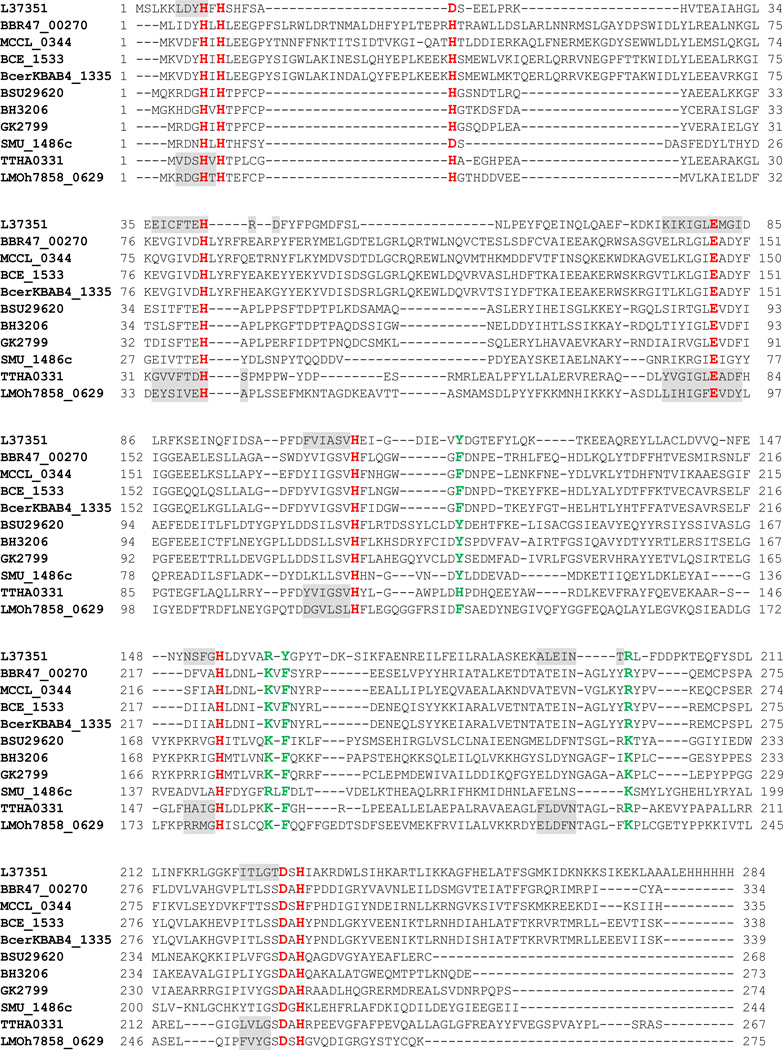Figure 10.
Primary sequence alignment of HPPs from various organisms. L37351 is the HPP from L.lactis subsp. lactis Il1403 characterized in this study. The organisms from which the other HPPs are derived are BBR47_00270: Brevibacillus brevis NBRC 100599, MCCL_0344: Macrococcus caseolyticus JCSC5402, BCE_1533: Bacillus cereus ATCC10987, BcerKBAB4_1335: Bacillus weihenstephanensis KBAB4, BSU29620: Bacillus subtilis subsp. subtilis str. 168, BH3206: Bacillus halodurans C-125, GK2799: Geobacillus kaustophilus HTA426, SMU_1486c: Streptococcus mutans UA159, TTHA0331: Thermus thermophilus HB8, LMOh7858_0629: Listeria monocytogenes str. 4b h7858. The primary sequence of L37351 shown here is the actual sequence of the recombinant protein characterized in this study while the remaining sequences are from the NCBI database. Metal-binding residues are shown in red while the conserved residues interacting with the substrate are shown in green. The β-sheets observed in the available crystal structures of the three HPP enzymes are highlighted in gray.

